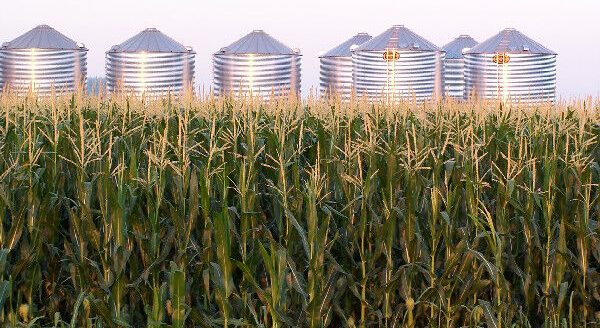Fall crop outlook: Reduced corn, soy yields
Estimates for the corn and soybean crops have been reduced in the Sept. 11 World Agricultural Supply and Demand Estimates, the first ones released since devastating storms with derecho winds that flattened up to a third of Iowa’s corn crop and roared across the Midwest. The previous estimates were released in August just before those storms hit.
A webinar discussion of the WASDE was presented by Purdue University’s Center for Commercial Agriculture. Jim Mintert, the center’s director, began by noting that the latest estimates reduced corn yields by about 3 bushels per acre overall, and 5.5 bushels per acres for Iowa, the hardest-hit state. Nevertheless, several states, including South Dakota and Kentucky, are enjoying record yields. “The north Corn Belt has good numbers,” said Mintert.
The storm isn’t the only factor to have reduced corn yields. Consistently dry weather has also reduced crop quality, said Mintert. In Iowa only 5% of the corn crop is currently rated “excellent.”
These factors have resulted in a modest uptick in corn prices of about $0.03 per bushel, he said. On the ethanol front, the U.S. Department of Agriculture estimates that 5.1 bushels of corn will be processed into ethanol, numbers that Mintert said he believes might still be too optimistic. “I find it difficult to get more optimistic” on ethanol numbers, he said.
Exports increasing?
The USDA is also forecasting a 34% increase in corn export volumes, an increase of about 100 million bushels. This is based on demand rise in Asia and especially China, as it aggressively rebuilds its swine herd from the devastation of the swine flu. This estimate also assumes continued growth in the world economy.
Corn ending stock estimates were downgraded from 19% at the end of August to 17% in September. The USDA also increased its price forecast from $3.10 to $3.50 per bushel. If ethanol demand recovers, said Mintert, the price could go above $3.50.
He expects the Corn Belt basis to weaken through the harvest period but strengthen into the spring.
The soybean crop also saw deteriorating conditions, with weather playing a part. The same dry weather that dented corn yields has resulted in a soybean production forecast that was reduced by about 112 million bushels from August. “This is still within the range of industry expectations, however,” said Mintert. Export forecasts of 21 billion bushels reflect the same assumptions about Chinese demand and its rebuilding of the pork industry. Soybean ending stocks were forecast at 10%, with prices up by $0.90 a bushel to $0.25 for the market year average. At these prices, said Mintert, there’s not much incentive to store; he encouraged soy growers to take advantage of the tally. He said soybeans could be more profitable in 2021 compared to corn.
Farm incomes are actually slightly up in 2020, due to government payments: the Coronavirus Aid, Relief and Economic Security Act, Paycheck Protection Program payments and other sources of support. Mintert compared today’s support with the 1980s, when total government payments were smaller in absolute terms but made up a bigger percentage of farm incomes.
A decline in 2020 net returns per acre was expected to put downward pressure on cash rent rates.
David Murray can be reached at [email protected].

